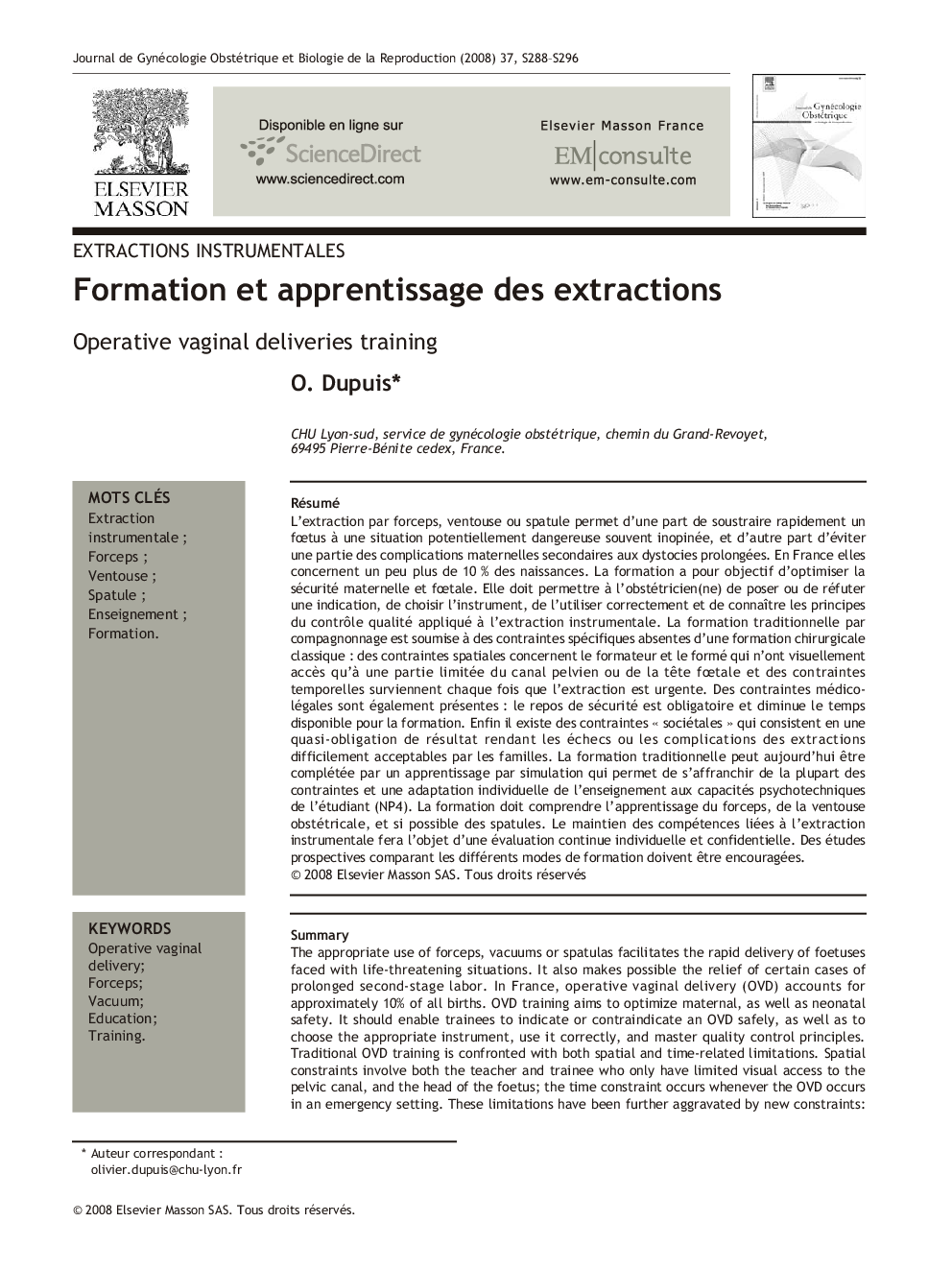| کد مقاله | کد نشریه | سال انتشار | مقاله انگلیسی | نسخه تمام متن |
|---|---|---|---|---|
| 3273461 | 1208396 | 2008 | 9 صفحه PDF | دانلود رایگان |
عنوان انگلیسی مقاله ISI
Formation et apprentissage des extractions
دانلود مقاله + سفارش ترجمه
دانلود مقاله ISI انگلیسی
رایگان برای ایرانیان
کلمات کلیدی
موضوعات مرتبط
علوم پزشکی و سلامت
پزشکی و دندانپزشکی
غدد درون ریز، دیابت و متابولیسم
پیش نمایش صفحه اول مقاله

چکیده انگلیسی
The appropriate use of forceps, vacuums or spatulas facilitates the rapid delivery of foetuses faced with life-threatening situations. It also makes possible the relief of certain cases of prolonged second-stage labor. In France, operative vaginal delivery (OVD) accounts for approximately 10% of all births. OVD training aims to optimize maternal, as well as neonatal safety. It should enable trainees to indicate or contraindicate an OVD safely, as well as to choose the appropriate instrument, use it correctly, and master quality control principles. Traditional OVD training is confronted with both spatial and time-related limitations. Spatial constraints involve both the teacher and trainee who only have limited visual access to the pelvic canal, and the head of the foetus; the time constraint occurs whenever the OVD occurs in an emergency setting. These limitations have been further aggravated by new constraints: decreasing time dedicated to training (European safety rules prohibit work the day after night duty), increasing litigation, and constraints imposed by society. Training by means of simulation removes such limitations making it possible to both avoid exposing pregnant women to the hazards of traditional training, and adapt the training to the skills of each trainee. OVD training should include forceps, vacuums and the use of spatulas. The OVD skills of obstetricians should be audited regularly on both a personal and a confidential level. Such audits could be based on a method using a simulator. Prospective studies comparing traditional and simulation-based training should be encouraged.
ناشر
Database: Elsevier - ScienceDirect (ساینس دایرکت)
Journal: Journal de Gynécologie Obstétrique et Biologie de la Reproduction - Volume 37, Issue 8, Supplement 1, December 2008, Pages S288-S296
Journal: Journal de Gynécologie Obstétrique et Biologie de la Reproduction - Volume 37, Issue 8, Supplement 1, December 2008, Pages S288-S296
نویسندگان
O. Dupuis,